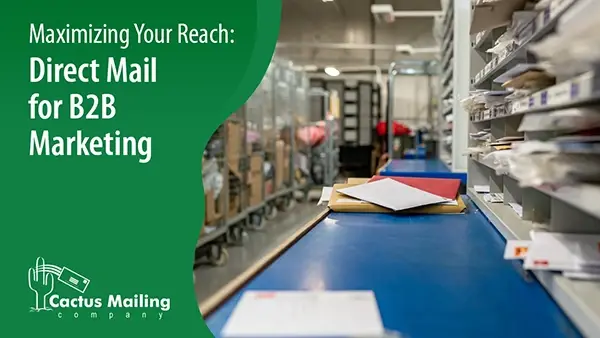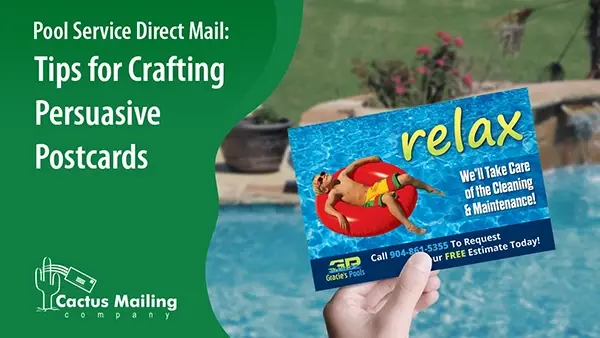We Are Here to Help!
Get pricing details and strategies that will work for your business.
Direct mail marketing remains a powerful tool for insurance agents looking to connect with potential clients. Despite the rise of digital marketing tactics, there's a tangible value in receiving a physical piece of mail, which can cut through the clutter of online advertisements. For insurance services, direct mail marketing campaigns can be targeted, offering a physical reminder of the services they provide to their desired audiences.
Understanding the nuances of direct mail campaigns is essential for success. An effective direct mail strategy includes knowing your audience, crafting a compelling message, and designing mailers that stand out in a crowded mailbox. When executed correctly, these strategies can lead to increased engagement and a higher return on investment.
Key Takeaways
- Direct mail provides a personal touch in reaching potential insurance clients.
- Effective campaigns require understanding the audience and crafting targeted messages.
- Measuring success is crucial to refining direct mail strategies and integrating them with broader marketing efforts.
Understanding Direct Mail Marketing
Direct mail marketing remains an influential strategy in the insurance industry. It leverages targeted communication to connect with potential customers effectively.
The Basics of Direct Mail
Direct mail involves sending marketing materials, such as brochures, postcards, or letters, directly to your prospective and current clients' mailboxes. This traditional marketing channel allows your insurance business to target a specific audience with tangible messages. By carefully selecting mailing lists and crafting relevant content, direct mail can serve as a powerful complement to your digital marketing strategies.
Benefits of Direct Mail for Insurance
One of the main benefits of direct mail for insurance sales is its ability to create a personal connection with recipients. Physical mail stands out in a predominantly digital world, often leading to higher response rates compared to some online marketing channels. Additionally, direct mail’s tangible nature can boost your brand's visibility and credibility.

Creating Effective Insurance Direct Mail Campaigns
Creating successful insurance direct mail campaigns involves meticulous planning and execution. From understanding your audience to crafting relatable content, every step is crucial to generate valuable leads for your insurance business.
Demographics and Targeting Strategies
The key to maximizing the impact of your direct mail marketing campaign is to understand your target demographic. You'll need to analyze data such as age, income, geographic location, and other relevant factors that pertain to potential insurance clients. With a clear demographic picture, employ targeting strategies that resonate with your audience's specific needs and preferences.
Building a Qualified Mailing List
A high-quality mailing list is the backbone of any direct mail campaign. Your insurance agency should compile a list based on the likelihood of conversion, using historical data and market analysis. This list should include individuals who have shown interest in insurance products or are in a life stage that typically requires insurance solutions. Lead generation is a continuous effort, so constantly refine your list to ensure high potential for engagement.
Crafting Postcard Messages
Postcards are a visually appealing option for concise and compelling messages. Your postcard messages should clarify the insurance product and how they benefit the recipient. Whether you're marketing health insurance or auto insurance, include a strong call-to-action (CTA) that a potential customer can take to achieve your marketing campaign goal.
Here are several examples of insurance postcard messaging that focus on the unique benefits of the respective insurance type, with a clear CTA to engage the recipient:
Health Insurance
- Postcard Message: "Secure your health, secure your future. Our health insurance plans cover a wide range of medical needs, ensuring you're always protected. Act now for peace of mind. Contact us today!"
- Shorter Copy: "Stay healthy, stay covered. Our health insurance plans are here for you. Inquire now!"
Life Insurance
- Postcard Message: “Plan for life's unexpected moments. Our life insurance offers financial security for your loved ones. Don't wait, secure their future today. Call for more information.”
- Shorter Copy: “Secure tomorrow today. Learn about our life insurance options.”
Auto Insurance
- Postcard Message: "Drive with confidence! Our auto insurance provides comprehensive coverage for all your road adventures. Get a quote now and enjoy the journey worry-free."
- Shorter Copy: “Drive safe, stay insured. Get your auto insurance quote today!”
Travel Insurance
- Postcard Message: “Explore the world with assurance. Our travel insurance covers emergencies and unexpected events, so you can focus on making memories. Ready for your next trip? Let's talk!”
- Shorter Copy: "Travel worry-free with our comprehensive travel insurance. Contact us!"

Design and Production
The design of your direct mailer should reflect your brand awareness and professional image. Employ strong graphic design practices by using high-quality images, legible fonts, and an attractive color scheme that aligns with your insurance company's branding. The postcard printing process also warrants careful attention to detail to ensure that each mail piece reflects high-quality production values, supporting the overall credibility of your campaign.
Measuring Campaign Success
To effectively gauge the success of your insurance direct mail marketing initiative, you must scrutinize specific metrics that reveal the performance and impact of your campaign.
Key Performance Indicators
Key Performance Indicators (KPIs) are crucial for understanding the efficiency of your direct mail efforts. Think of these KPIs as a dashboard showing the health of your campaign:
- Conversion Rates: The number of recipients who took a desired action, translating to sales, not only sheds light on the campaign's effectiveness but also allows you to measure your return on investment (ROI).
- Investment vs. Return: Compare the cost of your campaign against the revenue generated. This gives you a clear picture of the financial viability relative to other marketing strategies.
When you collect this data, make sure to align these metrics with the objectives of your campaign to validate its progress or highlight areas for improvement.
Analyzing Direct Mail Response Rates
The response rates of your direct mail can provide powerful insights:
- Direct Mail Response Rates: This measures the percentage of recipients who respond to your mail. A higher rate means your content is resonating well with your target audience.
- Data Utilization: Break down the data to discover the specifics such as which demographics are responding better, thus optimizing your reach.
Comb through each aspect of response rates, from the initial contact to the final action taken by a potential client. This analysis not only underscores efficacy but provides a road map for future campaigns, allowing for refined targeting and improved results.
Integrating with Multi-Channel Marketing
Incorporating direct mail into your wider marketing strategy offers a tangible dimension that complements digital efforts and helps to solidify brand recognition among existing customers and potential clients.
Combining Direct Mail with Digital Strategies
Direct Mail and Email: Balance the tangibility of marketing mail with the immediacy of email. For instance, aligning your direct marketing mailshots with email campaigns can reinforce your message. Using website analytics can guide you to when your audience is most receptive, leading to synchronized digital and physical outreach.
Social Media Integration: Pair marketing mail initiatives with social media campaigns to enhance your brand recognition. For example, a unique hashtag included in your mailer can track engagement across platforms, seamlessly connecting your print and digital narratives.

Follow-Up Techniques and Customer Retention
Initial Engagement: Follow up with an email thanking recipients after an initial direct mail campaign. This demonstrates attentiveness and invites them to engage with your services online, connecting the direct mail piece and your website or digital presence.
Maintaining the Relationship: Use insights gained from interactions—email, social media, or via physical mail—to tailor continued communication. Appreciate your existing customers by sending offers or information that adds value, reinforcing the relationship and enhancing customer retention.
By weaving a direct mail piece with various digital channels, you stay at the forefront of your audience's minds and create multiple touchpoints that build a more robust marketing ecosystem.
Conclusion
Insurance agents still find that direct mail marketing is a powerful way to connect with potential customers. The physical presence of mailers, which provides a unique counterbalance to the deluge of digital ads, makes it effective. These campaigns enable insurance services to target specific audiences and serve as a physical reminder of the services that are offered. Understanding your audience, producing engaging content, and designing visually striking physical mailers are essential to successful direct mail for insurance marketing. When implemented correctly, this tactic can significantly improve client engagement and provide a profitable return on investment.
Frequently Asked Questions
In this section, you'll find targeted information addressing common inquiries about direct mail marketing in the insurance industry, helping you to understand its effectiveness and implementation.
What are the benefits of using direct mail for lead generation in insurance?
Direct mail boasts a tactile advantage, giving prospective clients a physical reminder of your services. Its physical nature can enhance your lead generation by resonating with customers on an individual level, often yielding higher response rates than some digital methods.
How can insurance services measure the success of their direct mail marketing campaigns?
Insurance companies can track campaign success through response rates, conversion rates, and ROI. Utilizing unique phone numbers or landing pages for each campaign can provide you with clear metrics to gauge effectiveness.
What are the most effective direct mail strategies for insurance agents?
Strategies that focus on clear actionable steps for clients are among the most effective. Sent at the right frequency, direct mail pieces that stand out visually and connect with customer needs can significantly impact customer engagement.
What are the critical components of a successful home insurance direct mail campaign?
A successful insurance mailer campaign must have compelling content, a strong call-to-action, and be targeted appropriately. High-quality materials and designs that reflect the value of an insurance agent's offer also play a critical role in the overall impact.
How does direct mail in the insurance industry compare to other marketing channels?
Direct mail often delivers more personal insurance marketing than digital channels and can yield higher response rates in specific demographics. The physical presence of mail pieces also ensures better brand recall, establishing direct mail as a valuable complement to digital marketing efforts.
Our direct mail postcards have helped various businesses get leads, boost brand awareness, and grow revenue. Let us help you create a postcard design to achieve your marketing goals!

 Joe McAtee: Jun 28, 2024
Joe McAtee: Jun 28, 2024


 Jill Brown
Jill Brown
 Mike Ryan
Mike Ryan